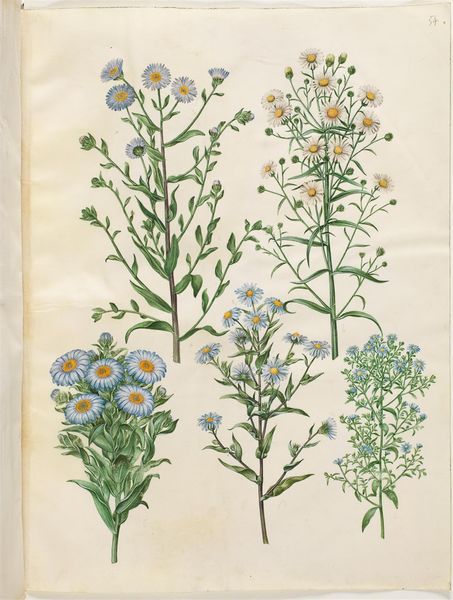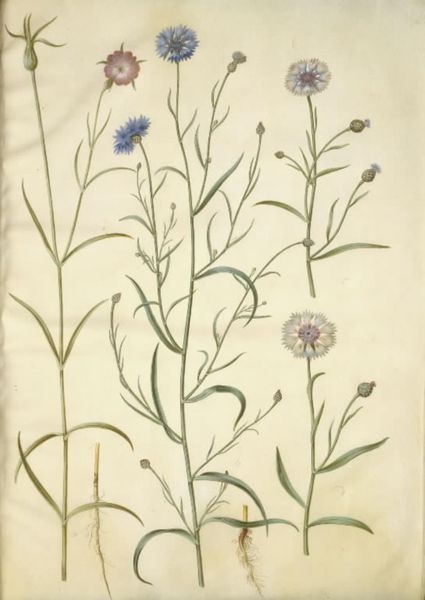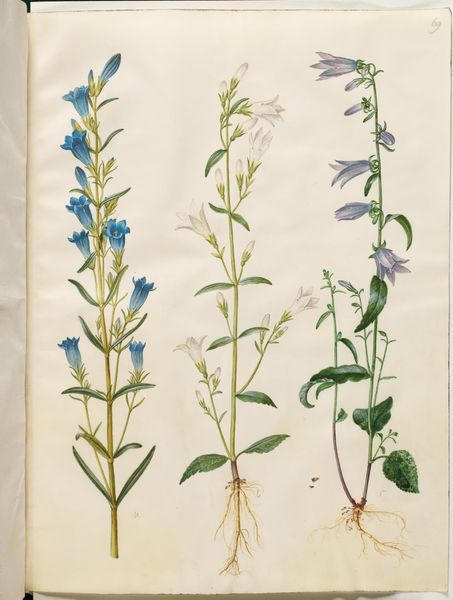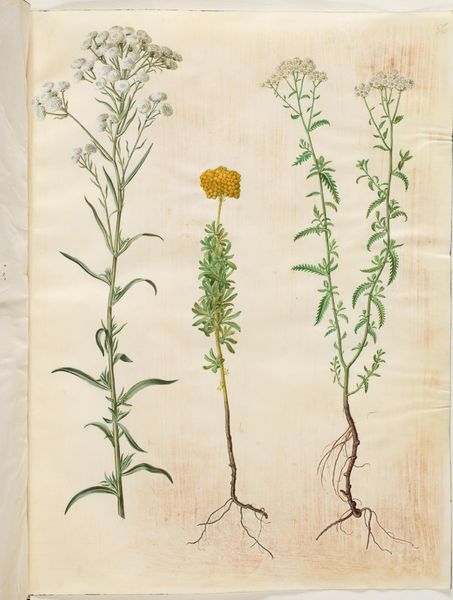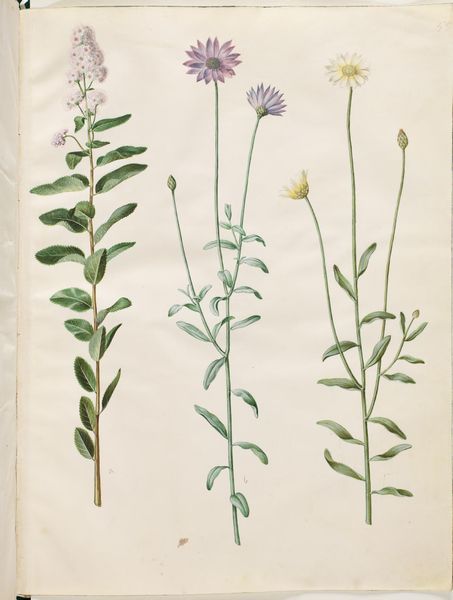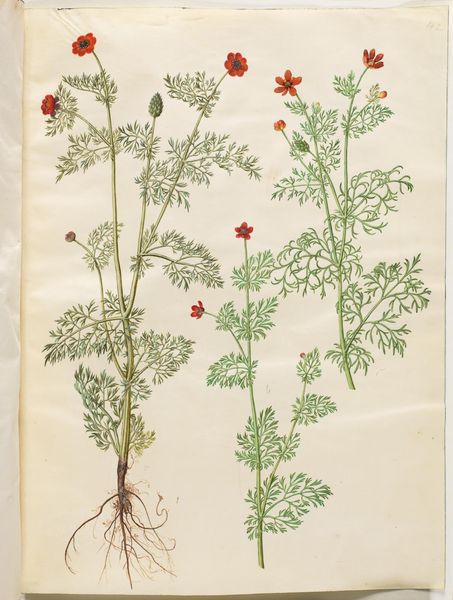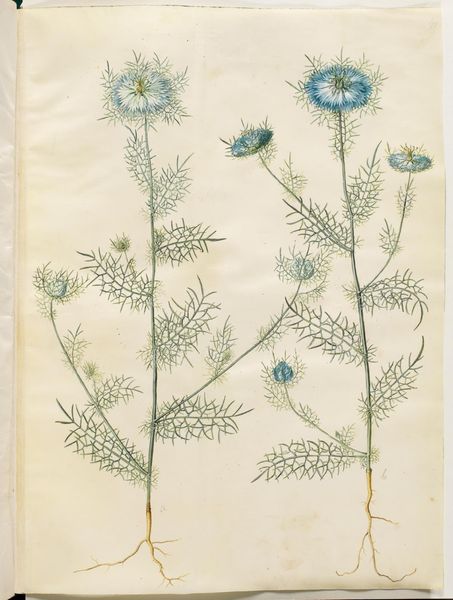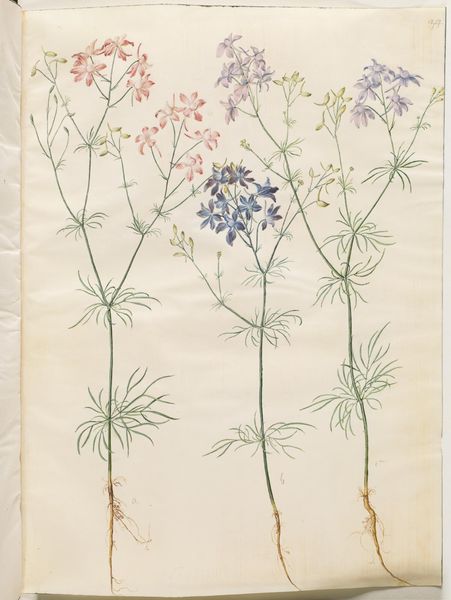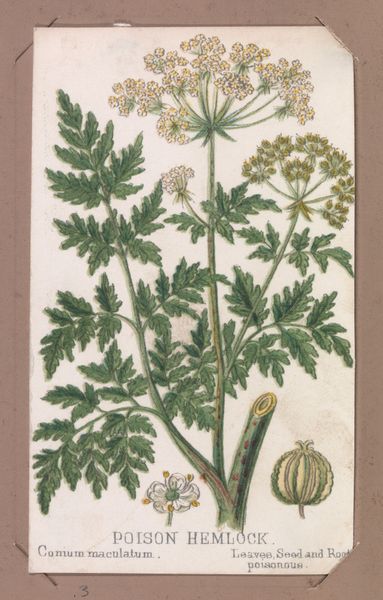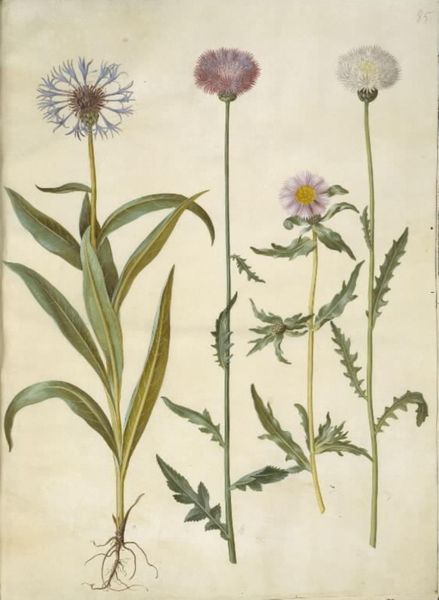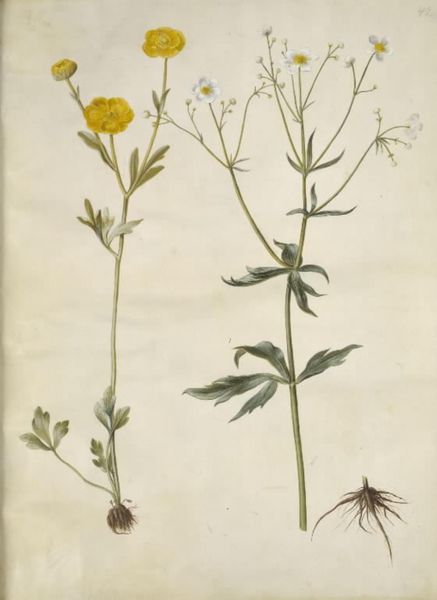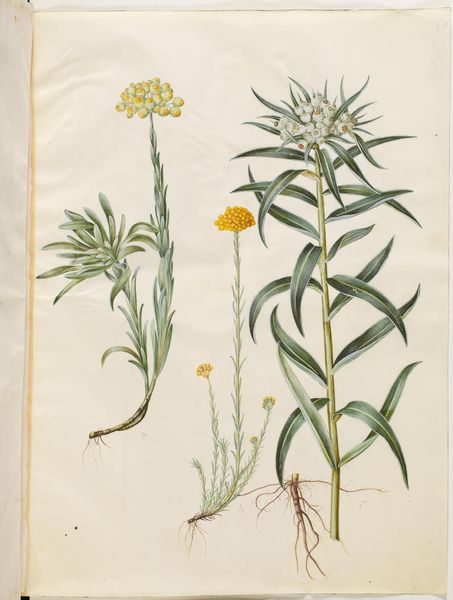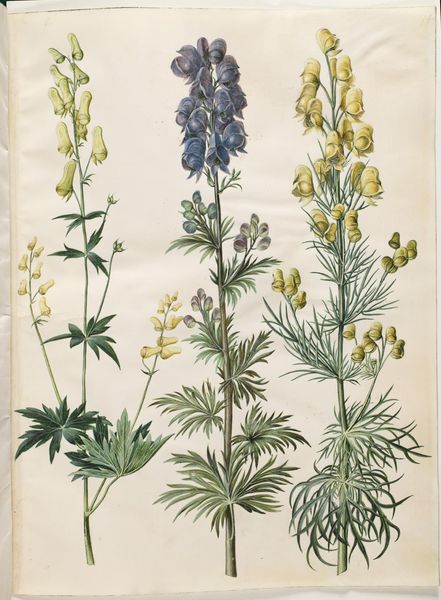
Nigella hispanica (djævlen i busken); Nigella sativa (sortkommen) 1649 - 1659
0:00
0:00
drawing, gouache, watercolor
#
drawing
#
water colours
#
gouache
#
watercolor
#
botanical drawing
#
northern-renaissance
#
botanical art
#
watercolor
Dimensions: 505 mm (height) x 385 mm (width) (bladmaal)
Editor: So, this is "Nigella hispanica (djævlen i busken); Nigella sativa (sortkommen)" created sometime between 1649 and 1659 by Hans Simon Holtzbecker. It's a watercolor and gouache drawing. I'm immediately drawn to the detail, how each little leaf is meticulously rendered. What aspects of this botanical illustration strike you? Curator: Ah, yes, a delicate dance of science and art. Holtzbecker really captures the essence of these plants, doesn't he? It reminds me of a passage from Nabokov's "Speak, Memory," where he describes the "delicate aliveness" of botanical illustration. I think it speaks to how closely people observed the natural world back then. It's like they were trying to truly *know* these plants, not just classify them. It's so funny; I often wonder what he would have made of today’s obsession with hyper-realistic digital art? Do you suppose he felt a similar pull towards perfectly capturing his subjects? Editor: That's a really interesting thought, and that phrase 'delicate aliveness' really hits home! The plants do seem alive here, almost as if they might sway in a gentle breeze if you weren't careful. It also makes me think, how accurate were these drawings expected to be? Was there room for artistic license, or was scientific precision the main goal? Curator: That's the delicious tension, isn't it? On one hand, these illustrations served a very practical purpose, documenting plants for medicinal or scientific reasons. So, accuracy was paramount. But at the same time, Holtzbecker wasn't a camera. There's an element of interpretation, of *feeling*, in the way he renders those delicate leaves, the subtle variations in color. Maybe it wasn't a matter of license, but a deeper form of observation that brings out both truth and beauty. What do you think – do you detect Holtzbecker's hand, so to speak? Editor: I do! It's almost as though the artist has not just presented an image, but shared something of a personal moment, of contemplation. It does make one think how our scientific eye may miss an emotional connection! Curator: Exactly! It’s a reminder to embrace both the scientist and the artist within us, eh? A marvelous intersection!
Comments
No comments
Be the first to comment and join the conversation on the ultimate creative platform.
